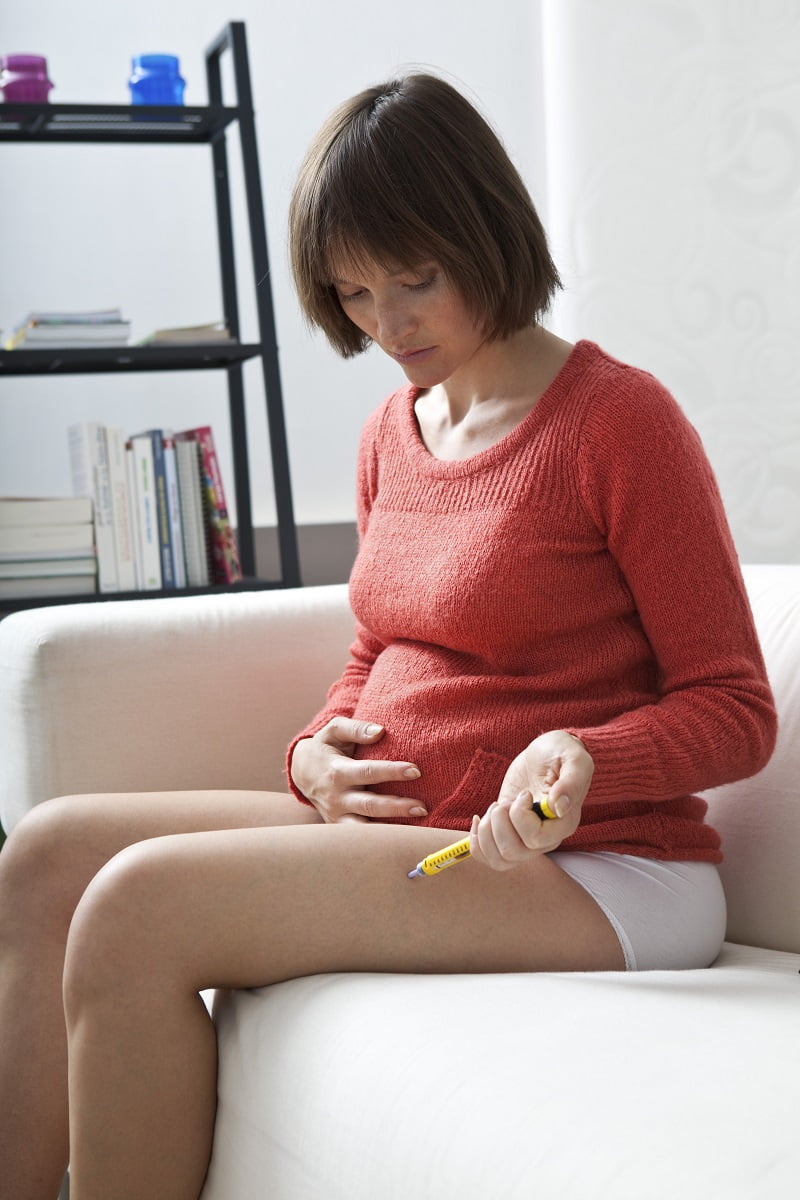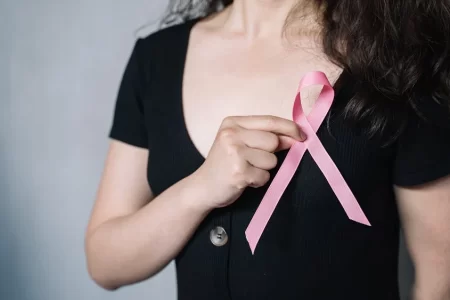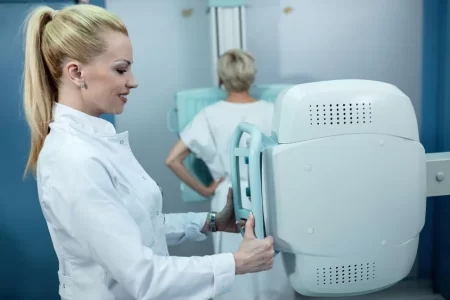Breast Changes During and After Pregnancy: Have I Got Breast Cancer?
- Updated on: Jul 10, 2024
- 4 min Read
- Published on Nov 9, 2020

The Breasts and Nipples
Internally, breasts consist of two main parts, namely lobules, which carry out milk production and, therefore, known as milk-producing glands, and the other part is known as ducts, which are the tubes that carry milk to the nipple. These two parts are surrounded and protected by glandular, fibrous, and fatty tissue.
Externally, breasts have two parts – nipple and areola (the darker skin area around the nipple). The surface of the areola is covered with some small raised bumps, which are called Montgomery glands. These glands produce fluid to moisturize the nipple.
Breast Changes During Pregnancy
Breasts change a lot during pregnancy to prepare them for feeding the baby. An increase in hormone is responsible for these changes. The changes may include the following:
Tenderness in the Nipple and Breast
During pregnancy, the hormones in the body prepare women’s breasts for lactation. In this process, the milk ducts become bigger in size and stretch when they fill with milk early in pregnancy. All of this causes the breasts to be more sensitive, particularly your nipples. This may cause discomfort while touching, walking, and lying down. Many women try out the following things to ease the discomfort and tenderness:
- Wearing a supportive and well-fitting maternity bra.
- Wearing a cotton bra.
- Being extra careful to avoid knocking the breasts
Read About What is Breast Cancer (Female)?
Bigger Breasts During Pregnancy
Breast growth is a significant change in the breasts during pregnancy. During early pregnancy (around 6 to 8 weeks), breasts may get bigger and continue getting bigger throughout the pregnancy. In the case of the first baby, the cup size may increase by 1 or 2. Women may also feel itchiness in breasts during pregnancy due to stretching of the breasts.
Increased Size of Nipples and Areola
With an increase in breast size, there is a significant increase in the size of areolas and nipples. During pregnancy, the body produces hormones that prepare the woman to breastfeed.
Changes in the Color of the Nipples and Areola
Darkening and enlargement of areolas (the area around your nipples) are among the earliest signs of pregnancy. As the pregnancy progresses, the areolas may grow to bigger circles, and the color may darken. These changes may or may not remain after giving birth to the child.
Bigger and More Noticeable Montgomery Glands
Montgomery’s tubercles are the raised spots around your nipples. This is also considered one of the first symptoms of pregnancy. However, these symptoms may be noticeable even before the missed period. Breast changes during early pregnancy prepare a woman’s body for the big day.
Stretch Marks
With an increase in breast size, stretch marks on breasts during pregnancy may appear on the skin. The stretch marks are dark at first, but with time they fade and become less noticeable.
Milk Production
Breasts in women are able to produce milk during the second trimester of pregnancy. And this is the reason some women lactate during pregnancy.
At this stage, breasts produce colostrum, and you may notice occasional leakage from the nipples. But this is not a thing to worry about; in fact, it is good news because these common breast changes during early pregnancy signal everything is going right. And the body is preparing itself to nourish the baby after birth.
Read about Breast Cancer and Genetics: BRCA Gene
Breasts Changes After Pregnancy
Following are some of the changes that the woman body notices after Pregnancy i.e., after giving birth to the baby:
Sore and Cracked Nipples
Initially, it is very difficult with a newly born baby to make him suck the whole areola instead of just the nipple. This may lead to sore and cracked nipples because the baby does not attach to the breast correctly. When the baby sucks the nipple only, his tongue or roof of the mouth rubs on the nipple, this can make the nipples sore and cracked.To heal the nipples, get support from a midwife for making the baby lactate correctly.
Engorgement
Breast engorgement is the condition noticed by every mother. This happens when the breast becomes overfull of milk. The symptoms of breast engorgement may include hard, warm, and throbbing breast. Breast engorgement may be eased by:
- Feeding your baby on demand.
- Releasing small amount of milk via a breast pump so that it becomes easier for the baby to attach to the breast.
- Wear a well-fitting nursing bra that gives full room to the breasts and does not restrict them.
- Reducing the breast pain by applying chilled cabbage leaves to the breasts after feeding.
- Taking paracetamol at the recommended dose during breast pain, which is safe during breastfeeding.
Blocked Milk Ducts
Milk ducts may get block while breastfeeding. This can sometimes happen when you stop breastfeeding. Blocked milk ducts are accompanied by a small, painful, hard lump or a bruised feeling. Things that may help ease the problem may include:
- Feeding the baby more often.
- Changing position when you’re feeding so that the area can be fully drained.
- Massaging the lump towards the nipple while the baby is feeding
- Avoiding tight-fitting bra and clothes so the milk can flow freely
Mastitis
A continuous condition of breast engorgement and blocked milk ducts may lead to inflamed or infected breasts. This is called mastitis. In this condition, the breast may become red, hot, and painful. To ease the symptoms of mastitis, continue to breastfeed frequently, which helps to clear the infection and is not harmful to the baby.
Breast Abscess
If mastitis or such infection is not treated on time, it may develop an abscess (a collection of pus) in the breast. Although breast abscesses are not so common, careless behavior may give rise to such condition.
Antibiotics are usually recommended to treat abscesses. They are also drained using a needle and syringe. In case of a large abscess, a small cut is made to allow the pus to drain away.
Thrush
Thrush is a yeast infection caused by a microorganism Candida albicans that can occur on the nipple and areola during breastfeeding. In this condition, the following symptoms may occur:
- Itchy, painful, and sensitive nipples.
- Shooting pains deep in the breast that start after feeding and can last for a few hours.
Read: Five Things Patients Experience Immediately After Breast Cancer Diagnosis
Can Breastfeeding Reduce the Risk of Breast Cancer?
Breastfeeding reduces the risk of breast cancer risk greatly, especially if a woman breastfeeds for one year or more. Doctors recommend continuous breastfeeding for the first six months, which is essential for the baby. But if this breastfeeding process is extended to one year or more, it may be good for both the mother and the baby.











